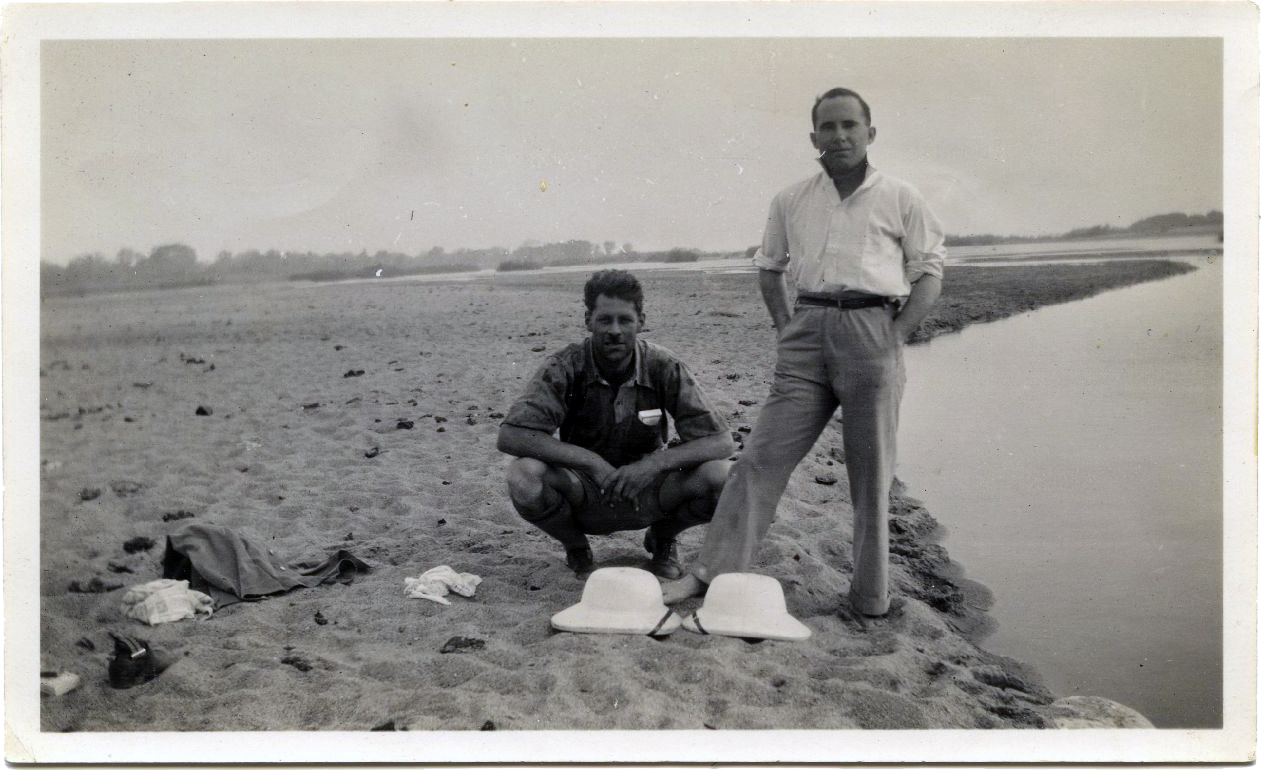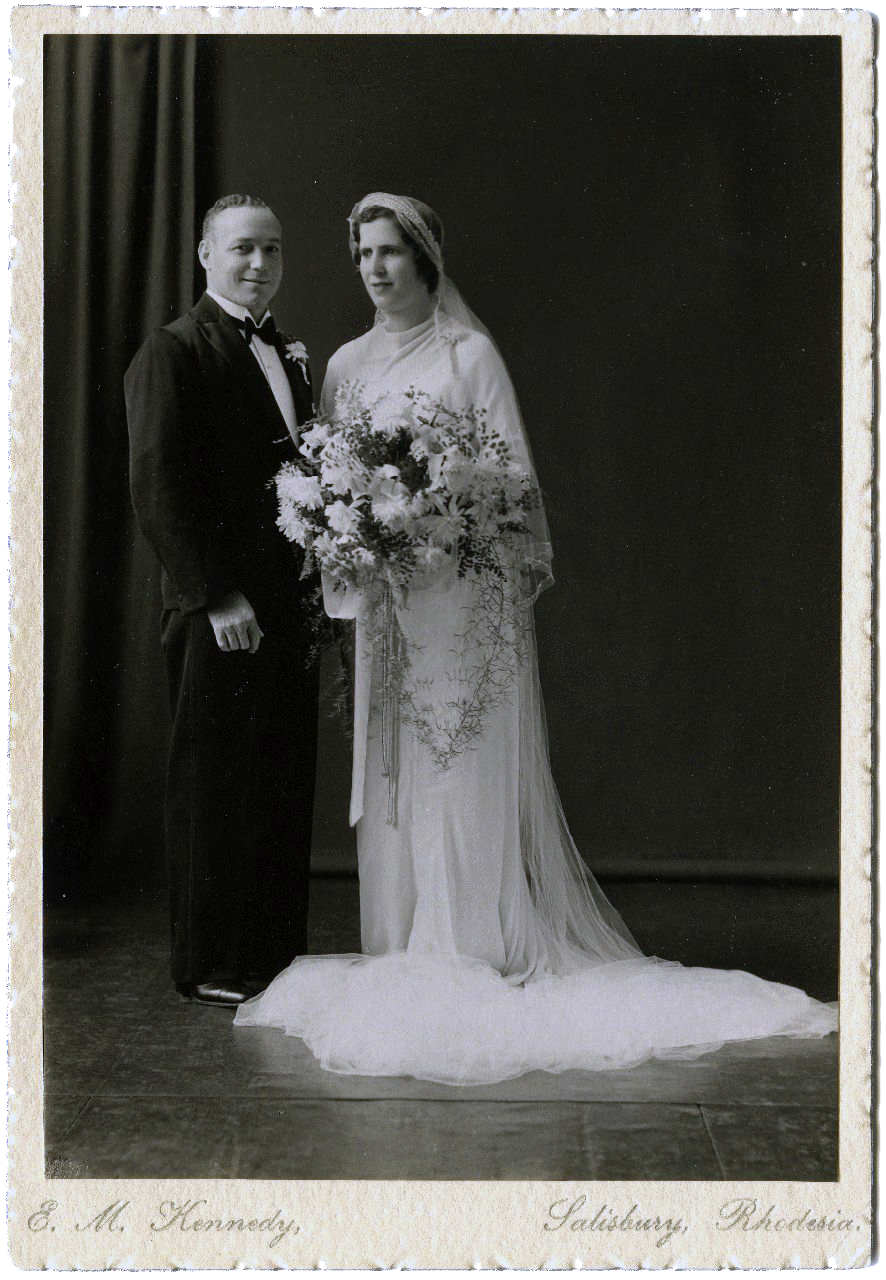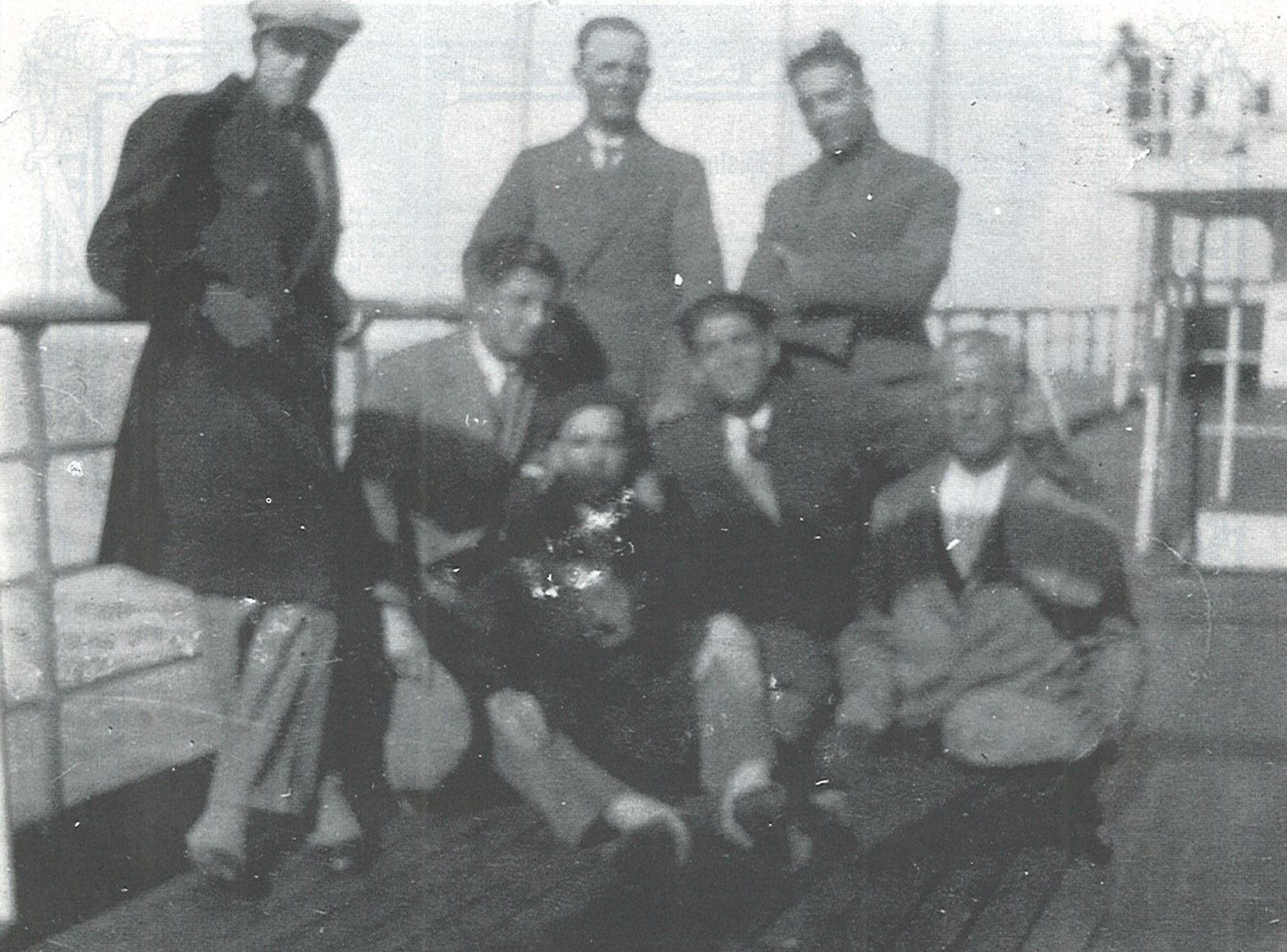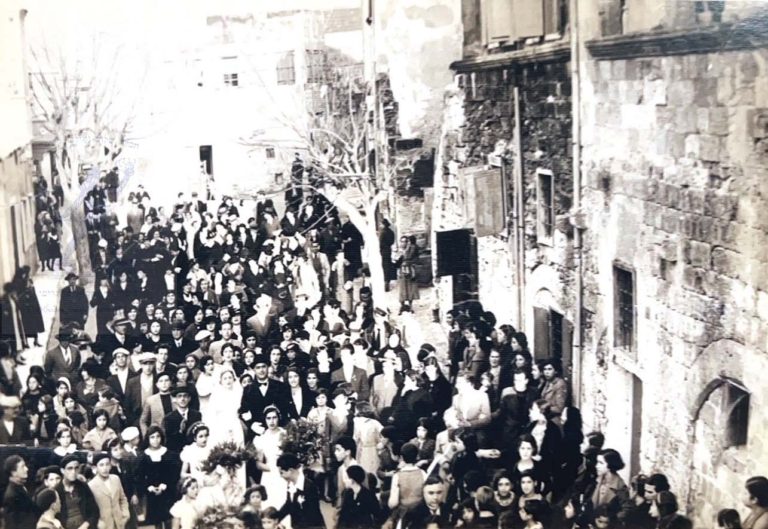Home » In-depth. Exceptions to the deportation of 23 July 1944 » Emigrants before deportation
Emigrants before deportation
In the decades prior to the deportation large swathes of the Jewish community of Rhodes emigrated abroad, leading to the creation of small communities of Rhodian Jews in various countries around the world.
View the map to discover the main destinations of the emigrants:
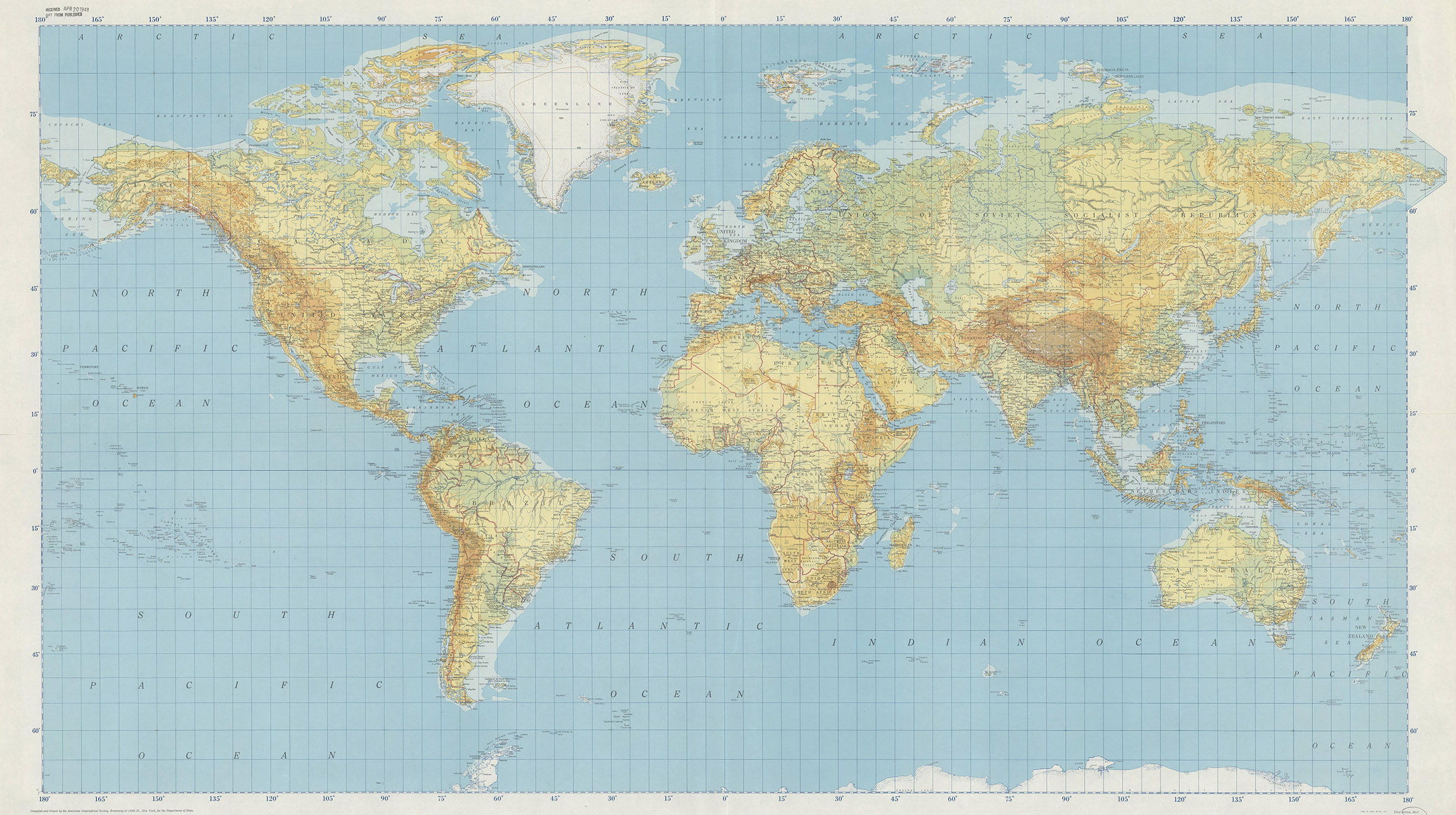
Argentina
Buenos Aires
Canada
Belgian Congo
Costermansville
Elizabethville
Leopoldville
Jadotville
Stanleyville
France
Paris
Italy
Milan
Rome
Belgium
Bruxelles
Palestine
Jerusalem
Rhodesia
Salisbury
United States of America
Los Angeles
New York
Seattle
Atlanta
South Africa
Capetown
Johannesburg
World map of 1947, compiled and drawn by the American Geographical Society for the Department of State (American Geographical Society, Public domain, via Wikimedia Commons)
In fact, migration was already common during the time of the Ottoman Empire and rooted in the very characteristics of the Dodecanese islands, an important trade hub.
In an interview given after her release, Lucia Franco, who was born in Rhodes on 17 June 1921 and moved to Kos with her father Hizkià Behor, her mother Rosa Galante and brothers Morris, Salvatore, Nissim and Davide, recalls her father’s trade dealings and the fate of her brothers. Apart from her and Davide, the others escaped deportation by emigrating to Rhodesia and South Africa.
Interview with Lucia Franco by Marcello Pezzetti, Brussels, May 12th, 2004 (CDEC Foundation Archive, Fund Archivio della Memoria)
The labour market in the Italian Islands of the Aegean was rather limited, especially after the international economic crisis of 1929. Migrations therefore intensified in the 1930s with many young men leaving in an attempt to improve the economic conditions of their family, to become independent and to start their own families, often in the countries of destination.
Some, especially those belonging to wealthier families, left the Dodecanese to pursue their studies at French or Italian universities.
In a 2004 interview, Alice Tarica, deported from Rhodes with her entire family, of which she is the only survivor, tells the story of her sister Sol Tarica. Having left at 18 to pursue her studies in Paris, she decided to return to Rhodes, a choice supported by her uncle, in the misguided belief that the island was a safer place than the French capital, where the effects of anti-Semitism and Nazism were already being felt. Sol was deported, together with all her family and the rest of the community, on 23 July 1944.
«After the laws, the Jews of Rhodes began to lose everything. All these young people who suddenly found themselves on the street had no other option but to try and emigrate. However, emigration was only possible for those who could afford it. The others, especially the poorer families, stayed where they were.».
The severe Italian Racial laws of 1938 soon extended to the Dodecanese, resulting in restrictions on property, expulsion from schools and public employment, and other oppressive measures that inflicted another very heavy blow to the economy of Jewish families on the islands.
Many families in the Jewish community fell into this category.
Shimon Israel, son of Nissim and Signorù Hazan, had five brothers and sisters, in order: Amélie, Berta, Josué, Jacques and Matilde. As the family grew, Nissim struggled to support it, leading him to leave for the USA where some of his wife’s relatives help him find work as a labourer or errand boy. The aim was to relocate the entire family but at the last minute Signorù refused to leave her sick mother and the project fell through.
Having turned sixteen, Shimon felt he had to do his part to help the family and after a period working in Rhodes, he left for the Congo in 1928. He left with other men from the Jewish community of Rhodes: four friends, with whom he shared the entire journey, and some adults who already lived in Congo and had returned to visit their families.
Arriving in Brindisi, the group travelled by train to Paris and from there to Brussels, where Shimon had relatives, the reason his father had chosen this tortuous journey for him. From Brussels they then travelled to London and from there to Southampton where they embarked on a long journey across the Atlantic Ocean: stopping in Madeira, they then continued along the west coast of Africa to Cape Town. The last stage took them by train to Elizabethville, where at the station Shimon remembers a crowd of relatives, cousins and friends who had come to greet the newcomers.
In 1937 he was joined by his sister Bertha and then by Josuè. Shimon then tried to get his parents to come, but as his mother was now very ill, they asked him to take their eldest daughter Amélie, her husband and their two children in their place, with the latter arriving in 1939. The last to leave for the Congo was Jacques. Matilde remained in Rhodes to look after her mother and was deported together with her father on 23 July 1944.
I was in Lusambo, where my cousins lived, and I remember that day of pain, of great sadness, because we knew what came after deportation. I immediately sent telegraphs and letters all over the place to find out where my father and sister were. My father had been killed. My sister [si era] survived.
My biggest regret is that I never saw my parents again. [...] If I had known when I departed that I would never see them again, I would never have left”.
Stella Levi, also deported, was the youngest child of Jehuda Levi and Miriam Notrica and had six older siblings: Morris, Selma, Felicie, Sara, Victor and Renée. Her brother Morris had already emigrated to the United States with her aunt and uncle six years before she was born in 1926. In 1930 Selma married and emigrated to New York and in 1936 she was joined by Sara. In 1939 Victor emigrated to the Belgian Congo. The last to depart was Felicie, who moved to New York in 1940.
The culture of emigration was so deeply rooted in the upbringing of the new generations that even children like Stella saw it as their destiny:
One night, before going to bed, she found an old suitcase at the bottom of a wardrobe. She blew off the dust and opened it on the floor. She carefully filled it with clothes, shoes, brand new notebooks, pens, a coat. She placed it by the door, got into bed and went to sleep. The next morning her mother found the suitcase and asked her if she was planning to go somewhere. “Of course,” she replied. “To university, in Italy.”
There were many families, especially the larger ones, in which the youngest siblings were born after the eldest had already emigrated abroad.
Alberto Israel was the youngest child of Rahamim Israel and Signorù Halfon and had seven older siblings: Daniel Bohor, Regina (Malka), Asher, Salvo, Elie, Aron, Giovanna and Alberto. Daniel Bohor left in 1925 for the Belgian Congo, Asher left in 1927, Salvo in 1935 and Malka in 1937. When Daniel returned to Rhodes in 1935 to get married, eight-year-old Alberto met his brother for the first time. He would meet his brother Asher for the first time only after the Shoah.
Interview with Alberto Israel by Marcello Pezzetti, Brussels, [2004] (CDEC Foundation Archive, Fund Archivio della Memoria)
It was thanks to this and the families that were built away from the Italian Islands of the Aegean that part of the Rhodian community escaped deportation, preserving the traditions and the memory of Rhodian Judaism for the future.
The young men who left to make their fortunes abroad continued to uphold the tradition of marrying women from Rhodes’ Jewish community. Some were joined by their brides-to-be in the country to which they had emigrated following long-distance engagements, while others, particularly if they had the chance, returned to Rhodes to celebrate their union in the Jewish quarter before starting their own family in their new country of residence.
